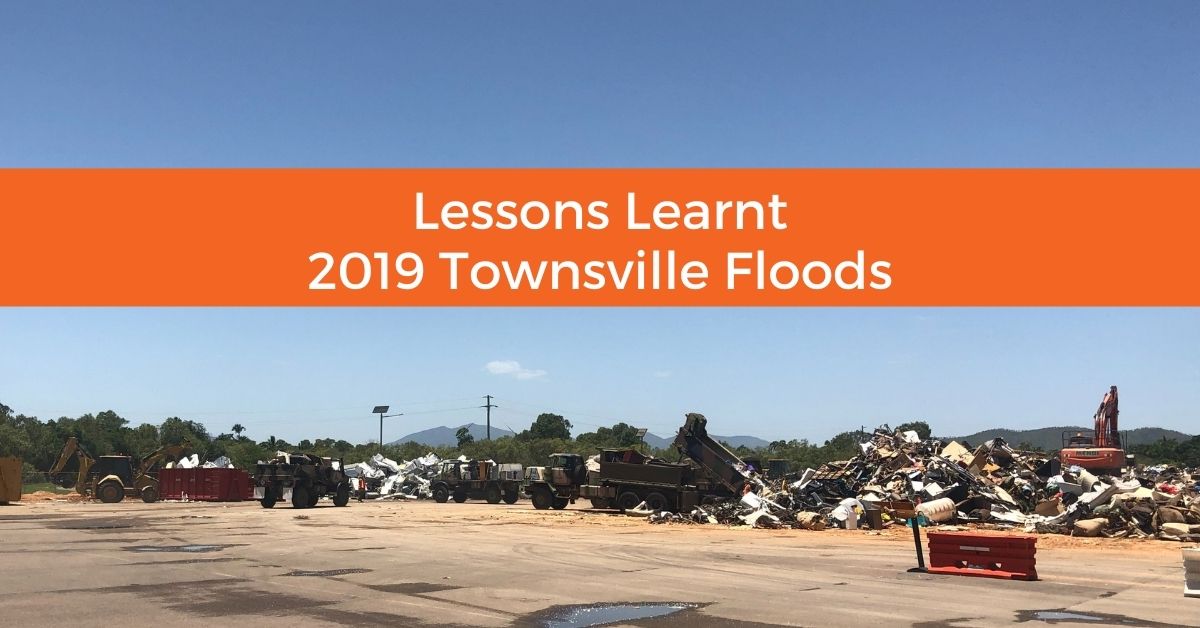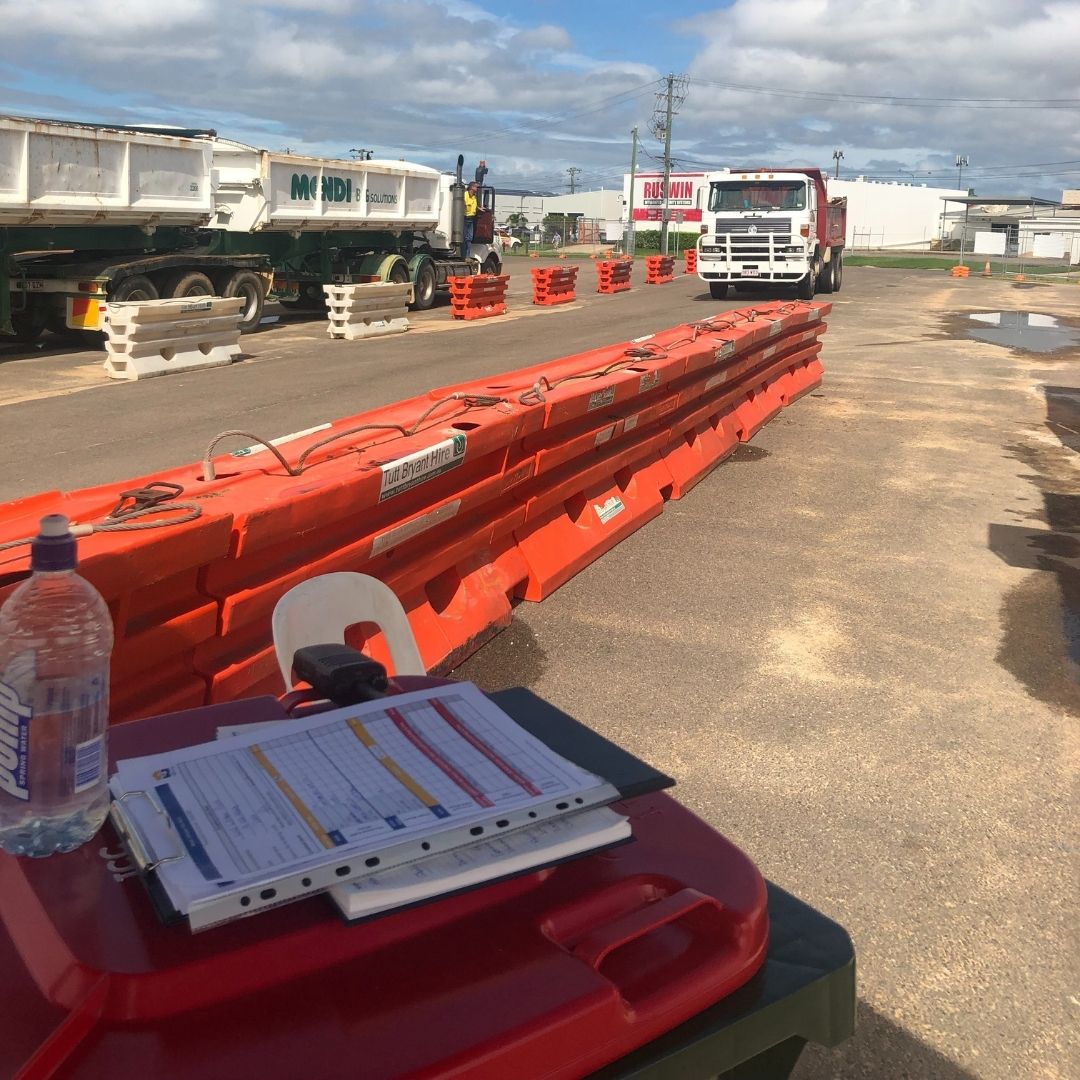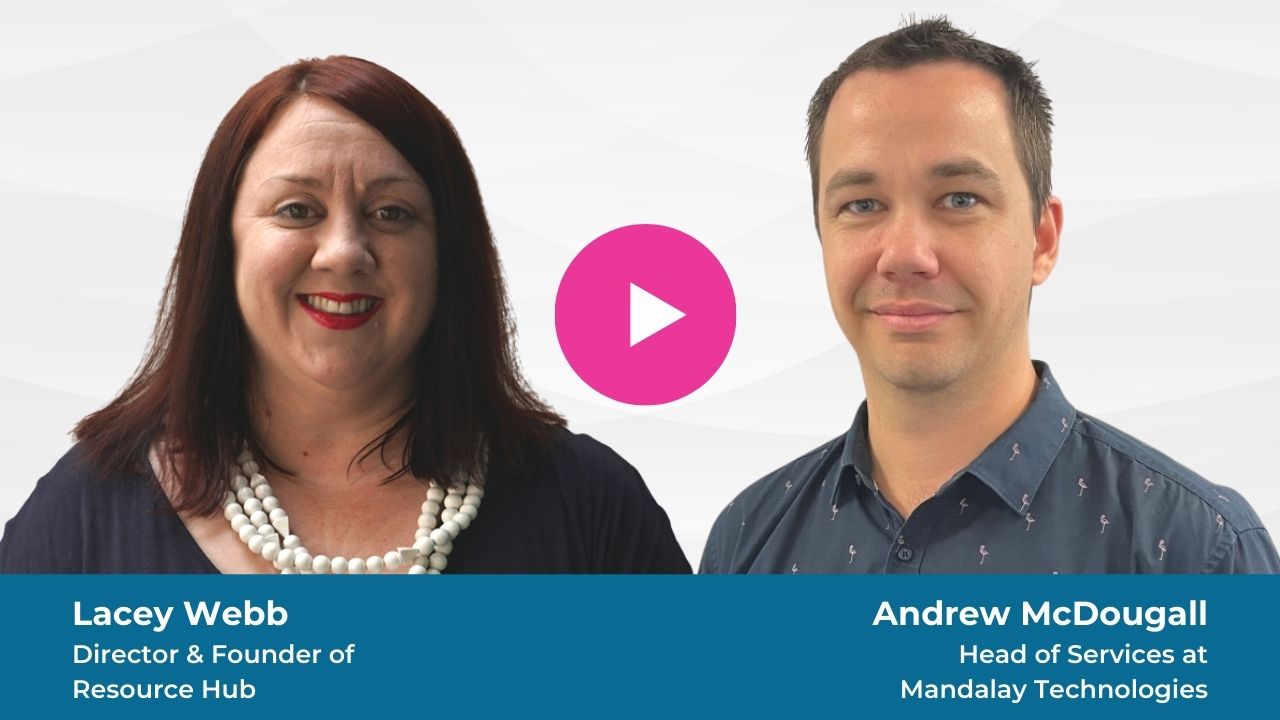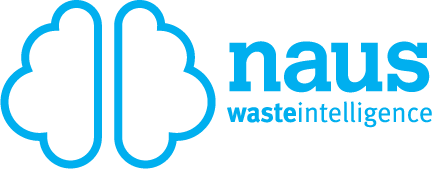
The 2019 Townsville floods were fast-moving and meant an unprecedented disaster for not just Townsville, but the entire region.
by Lacey Webb, Director and Founder of Resource Hub
In preparation for this year’s disaster season, Lacey Webb from Resource Hub looks back at some key takeaways from her work with the disaster-stricken area in 2019, and chats to Andrew McDougall, current Head of Services for Mandalay and former Waste Business Partner at Townsville City Council, about the 2019 Townsville flood response – from the perspective of helping facilities plan a low-tech data response in advance of a disaster event.
It was easy to shout “yes!” when asked if I could get on a plane and head to Townsville to be part of a much broader team on the ground in Townsville when the monsoon event occurred. Rather than looking at where the trucks go, setting up the transfer station layouts, or focussing on the mammoth challenge of community clean up, my focus was strictly on resolving issues of how to capture data, how to select and then train non-waste volunteers to man the front of a temporary transfer station, how to solve the unexpected administrative tangles at the facilities, and crucially, how to manage the flow of information in a way that would help with decision-making across all of council.
From that week, and considering experience during other natural disaster responses, the following are my key takeaways to help other regions in their preparedness:
1. Have a plan for real-time data collation and review.
Having manual tally sheets set up to capture information is critical in a disaster situation, but it’s good to remember that they’re not always going to be perfectly formatted for the job, as every disaster is potentially going to be different.
 The tally sheet that we started with on day one, which was intended to capture basic information of types of vehicles coming in, had by the end of that day changed to having sections for army vehicles, residents, and a section relevant to the type of material – whether it was mixed waste coming from a flood zone, or whether it was commercial BAU, or if it was coming in for landfill from another transfer station.
The tally sheet that we started with on day one, which was intended to capture basic information of types of vehicles coming in, had by the end of that day changed to having sections for army vehicles, residents, and a section relevant to the type of material – whether it was mixed waste coming from a flood zone, or whether it was commercial BAU, or if it was coming in for landfill from another transfer station.
Having a plan with tally sheets and a process for real-time daily data collation allowed not only for messaging back to the Mayor, Councillors and the community, but it also allowed for quick operational decision-making. Rather than looking back at the end of five days to see what worked, council could get an understanding of volumes coming in, which sites were working effectively, and which sites needed more resources at the end of every day.
And importantly – you need to RECEIVE those sheets!! In Townsville, it wasn’t practical to pick tally sheets up from all of the sites daily, and the Mandalay team was sitting in the background punching in data each night ready for the following day. So instead, sheets were photographed and texted through to a dedicated phone number at the end of every day, to be collated and processed.
2. The importance of using contractors.
This was not a new learning, but rather a reinforcement of the importance of using contractors. There are a few reasons for this:
- contractors align to disaster recovery funding requirements, allowing for cost recovery. Disaster funds often don’t cover your existing staff or business as usual costs, which includes wages, but they do cover extraordinary items such as response contractors. Know who those contractors are – and reassess annually in a review of your disaster response plan.
- contractors are a dedicated resource to resolve the challenge at hand and support your recovery. Your staff will have other competing priorities and may need to focus on their own clean-up and families. Contractor specialists are there to help keep things running while hopefully taking some pressure off your core team.
- Experience. There are specialists all over Australia who specialise in disaster response specific to waste management. Their methods will be tested, and they will likely come with collaborators – or other specialists that you may need!
3. The importance of collaboration.
In follow on to point 2, probably the biggest learning from Townsville and critical to the operation’s success, was the importance of collaboration.
Townsville City Council are fortunate in that they had the army at their disposal, which isn’t something that everybody gets access to. But it was the broader working together of teams that was the real opportunity. I encourage any council, as part of their disaster response plans when it comes to waste management, to plan on collaborative teams.
In Townsville, they had:
- CQG as an external contractor managing the clean-up approach, crews and finding enough airspace for the waste;
- Lacey and the Mandalay team working to deliver front end management, gatehouse staff direction and training, setting up processes back in the office at Mandalay to make sure data was captured and disseminated through to right people and even preparing responses to manage insurance risk when needed.
- The TCC team with support from Suez was managing the facility backend operations, from setting up the temporary sites, the movement of waste and traffic across the region, the movements of bins, and the staffing needs plus keeping the information flowing – all while keeping council’s day to day waste services on track and cleaning up their own homes! And of course, they had a dedicated team member just out on the road – check in with all teams, keeping spirits high and even delivering drinks and lunch!
I don’t believe that Townsville would have had the same response if they hadn’t had that collaborative team environment. It was critical to the success of their response.

4. Dedicated space for response teams
Townsville City Council had opened their local disaster recovery centre weeks before the event happened, so they had the right technology and the space for people. While not every region will be in a position to have a shiny new centre with the latest technology, and an army response team at hand, having a dedicated space for response teams was critical to the success of council’s response. There was one space where teams across the response could meet, it facilitated regular press conferences and it served as a data collation centre for multiple teams. It also meant that there was a space where, if you just needed to get away, you could go grab a quick soft drink and take a moment – and that helped to keep teams pushing ahead.
5. Disaster response planning in advance
The final learning is in relation to disaster response planning in advance. There’s only so much you can plan for, and while council has a comprehensive disaster response plan – usually those things include everything from which paddock or school grounds to use as a temporary transfer station – what it didn’t include was a schedule of what data would be needed, how loads would be accepted and how information would flow.
Having standard disaster response classifications for the way in which data is accepted and recorded is a significant opportunity to succeed. This should align to what type of waste is expected to come in, who will be bringing it in (community or clean-up crews?) and how and where it will go. And all of these things depend on your region and the types of disaster you are likely to experience. If you’re in a bush fire prone region, disaster clean up and disaster response will vary to the response that might suit a storm or cyclone-prone region. Aligning those responses as part of your strategy to the type of disasters that you tend to have is important, and having processes – cheat guides, tally sheets, and the people you can call on – all within your disaster toolkit is a must.
Check out our video with Andrew McDougall discussing these learnings and others that he shares! Our aim at Resource Hub is to work with regions to support prepared disaster response for the front of facilities, be it customised tally sheets, data recommendations to suit response approach and transactional software, or even just knowing who to call when you need a pair of boots on the ground. And that’s something that we like to work on now – at this time of year before disaster hits.



